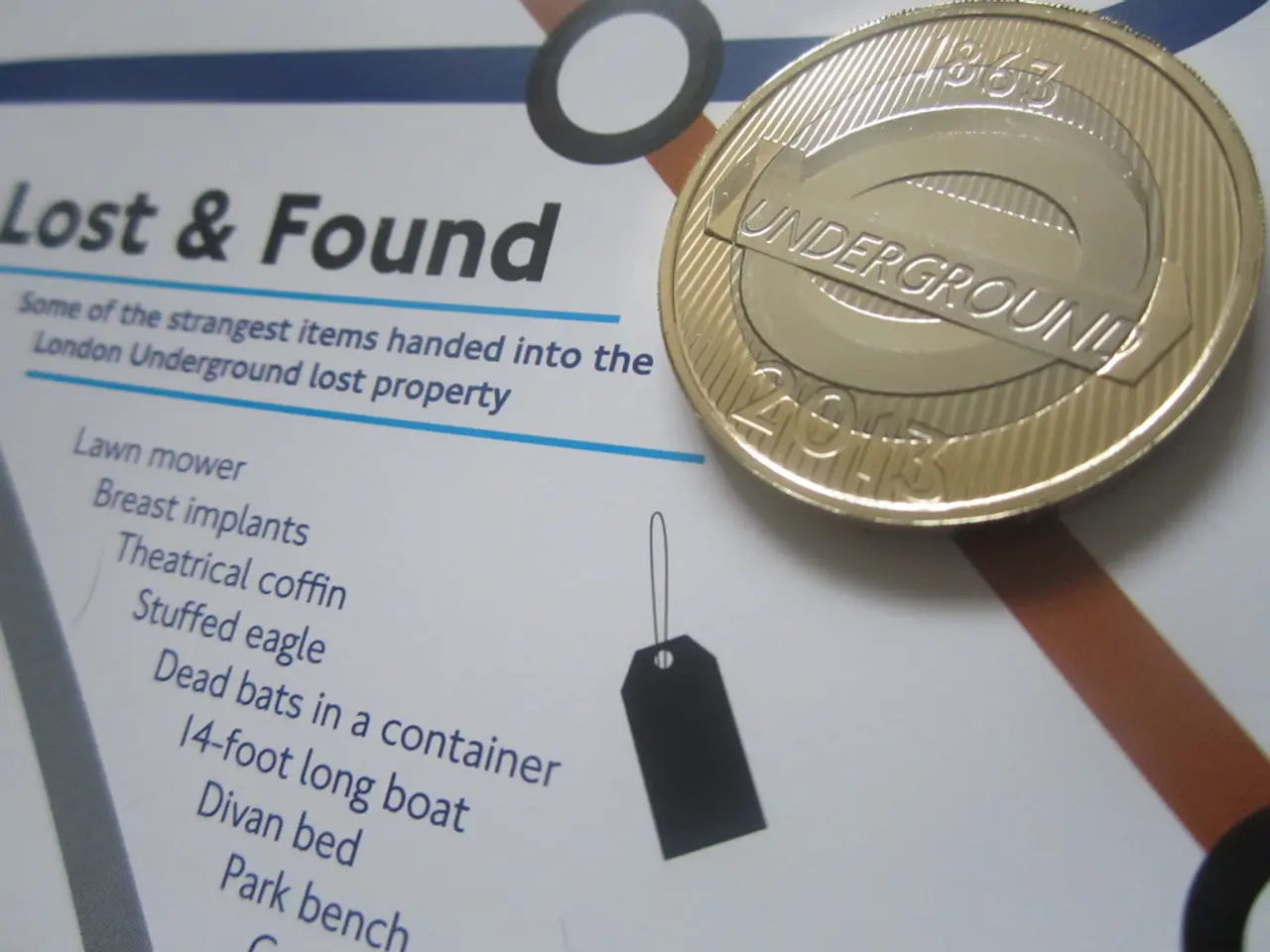Differences in Perception Regarding Potential Risks of US Stablecoins Emerge between European Commission and European Central Bank as per a Recent Report
The European Central Bank (ECB) has raised concerns over the global usage of US stablecoins, expressing worries about monetary sovereignty, transparency, and systemic risks associated with large-scale adoption of these digital assets, particularly those denominated in foreign currencies like the US dollar.
The ECB's primary concerns revolve around preserving the euro's role and the EU's financial stability. The bank is pushing for a revision of the MiCA (Markets in Crypto-Assets) regulations to ensure stablecoins operating within the euro area are backed by high-quality reserves held in Europe and not overseas.
One of the key issues is fungibility and regulatory oversight. MiCA distinguishes between e-money tokens (EMTs) and asset-referenced tokens, including foreign currency stablecoins. The regulation restricts the use of non-euro stablecoins in the EU, imposing daily transaction volume limits and requiring issuers to limit their circulation or cease operations beyond these thresholds.
The ECB also emphasises the need for transparency and robust oversight, requiring stablecoin issuers to be licensed within the EU, publish detailed disclosures, undergo frequent audits, and provide mechanisms like on-chain freeze functions. This is aimed at reducing risks associated with unstable pegs, lack of transparency, and potential capital flight.
The ECB is also advocating for regulatory alignment with global developments, such as the US GENIUS Act, which sets different rules around reserves and licensing, and imposes no usage caps on stablecoins. The bank believes that divergence could create complexity for global stablecoins and affect euro area financial sovereignty if US stablecoins are not subject to similar constraints.
It is worth noting that the official from the European Commission stated that it makes no economic sense for US users to impose redemption requests on European stablecoin issuers. Stablecoins issued under both US regulations and MiCAR, such as USDC, are currently believed to be an example.
Under MiCAR, EU stablecoin issuers are required to be willing to directly redeem stablecoins to end users, while this is not a requirement in draft US federal legislation or New York rules. The foreign currency limits in MiCAR do not cover any other financial transactions, such as stock market trading, funds, or certain institutional payments.
The ECB President, Lagarde, has called for a MiCAR revision, despite the question not touching on central bank digital currencies (CBDCs). However, Peter Kerstens, the MiCAR architect, believes there's no need for MiCAR v2.
MiCAR provides multiple safeguards, including a clause where regulators can step in where they believe a stablecoin is threatening monetary sovereignty. However, there may be a risk for those holding stablecoins in self-hosted wallets, as it can be trickier to determine their location.
The daily transaction limit for foreign currency stablecoins across the entire EU is €200 million. A clause in the MiCAR regulation requires a report from the Commission on potential amendments to address issues such as decentralised finance (DeFi). The European Commission and ECB have clashed over stablecoins, and a piece on stablecoin fungibility is planned to be published within the week.
Despite the risks associated with self-hosted wallets, they are not considered massive. The ECB is focused on ensuring that stablecoins operate within clear, robust oversight frameworks, preventing US dollar stablecoins from eroding the euro’s role and the EU’s financial stability.
[1] ECB (2022). "ECB publishes opinion on MiCA regulation." [Online] Available at: https://www.ecb.europa.eu/press/pr/date/2022/html/ecb.pr221103_1~458e117a3d.en.html
[2] European Commission (2020). "Regulation (EU) 2019/1010 of the European Parliament and of the Council of 14 June 2019 on European Union markets in crypto-assets (MiCA) and amending Regulation (EU) No 600/2014 on markets in financial instruments and Regulation (EU) No 648/2012 on OTC derivatives, central counterparties and trade repositories." [Online] Available at: https://ec.europa.eu/info/law/better-regulation/have-your-say/initiatives/12523-Regulation-on-European-Union-markets-in-crypto-assets-MiCA_en
[3] European Commission (2021). "MiCA regulation enters into force." [Online] Available at: https://ec.europa.eu/info/law/better-regulation/have-your-say/initiatives/12523-Regulation-on-European-Union-markets-in-crypto-assets-MiCA_en
[4] ECB (2021). "ECB calls for MiCAR revision." [Online] Available at: https://www.ecb.europa.eu/press/pr/date/2021/html/ecb.pr210701_1~4f8e4d8067.en.html
[5] BIS (2021). "BIS paper on stablecoins." [Online] Available at: https://www.bis.org/publ/work997.htm
- The European Central Bank (ECB) is advocating for a revision of the MiCA (Markets in Crypto-Assets) regulations to ensure stablecoins operating within the euro area are backed by high-quality reserves held in Europe, as opposed to overseas, to preserve the euro's role and the EU's financial stability.
- One of the key issues the ECB is concerned with is fungibility and regulatory oversight, requiring stablecoin issuers to be licensed within the EU, publish detailed disclosures, undergo frequent audits, and provide mechanisms like on-chain freeze functions to reduce risks associated with unstable pegs, lack of transparency, and potential capital flight.
- The ECB believes that regulatory alignment with global developments, such as the US GENIUS Act, is necessary to avoid complexity for global stablecoins and maintain euro area financial sovereignty, as US stablecoins may not be subject to similar constraints.
- Under MiCAR, EU stablecoin issuers are required to be willing to directly redeem stablecoins to end users, while this is not a requirement in draft US federal legislation or New York rules, potentially creating differences in operational frameworks within finance and technology businesses.




